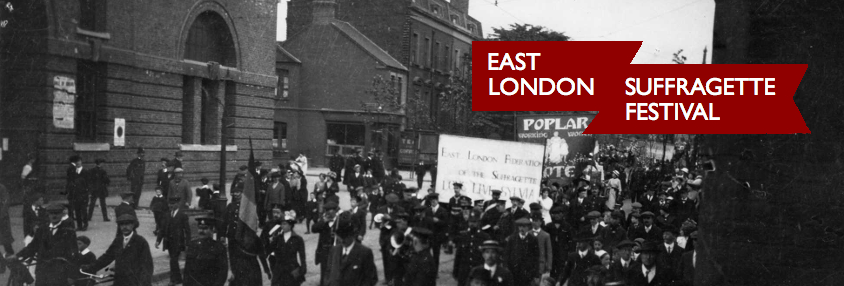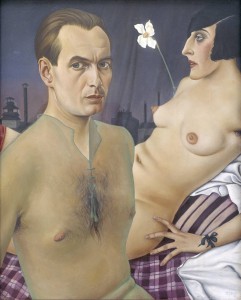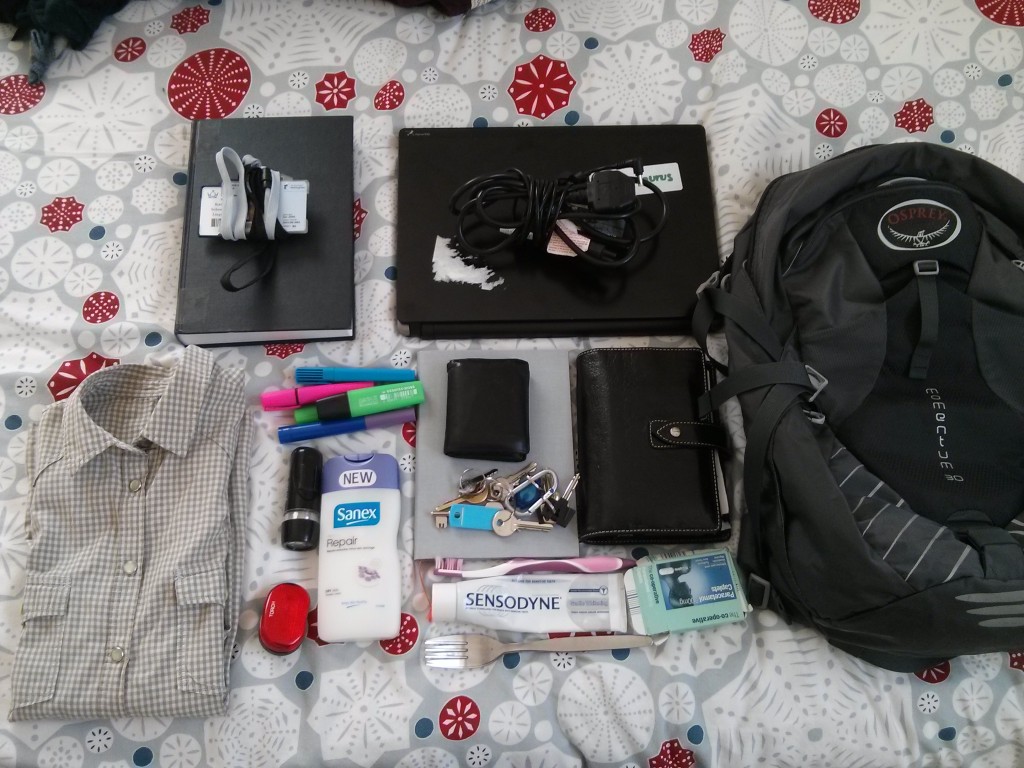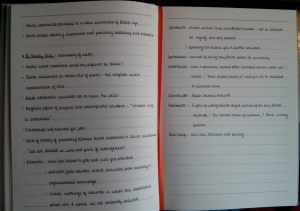Content warning: explicit discussion of misogyny, violence against women and racism.
This is a working paper currently being developed for publication – comments and feedback are very welcome!

Wordcloud of Elliot Rodger’s manifesto
Like many people, I was shocked at the Isla Vista shootings. In an effort to understand what happened, I read – a lot. There is a collection of links about Elliot Rodger, rape culture and misogyny at the end of this post.
I then downloaded Elliot Rodger’s manifesto and approached it with corpus linguistic techniques. I first calculated keywords, then go on to examine girl, girls and wom?n in more detail.
This table shows the top 25 keywords when compared with the British National Corpus (BNC). A keyword occurs more frequently than we’d expect; in corpus linguistics, we work this out by comparing how often it occurs in a reference corpus (in this case, the BNC) with how often it occurs in the corpus we’re interested in. Words that are more key are more frequent in the target corpus than we’d expect from looking at the reference corpus.
| N |
Word |
Frequency |
Keyness |
| 1 |
I |
5,926 |
13,752.69 |
| 2 |
my |
2,501 |
9,101.61 |
| 3 |
me |
1,544 |
4,546.97 |
| 4 |
didn’t |
303 |
4,137.62 |
| 5 |
was |
2,668 |
2,141.77 |
| 6 |
father’s |
144 |
1,966.18 |
| 7 |
mother’s |
105 |
1,433.64 |
| 8 |
girls |
292 |
1,406.19 |
| 9 |
life |
523 |
1,349.66 |
| 10 |
soumaya |
97 |
1,324.40 |
| 11 |
couldn’t |
96 |
1,310.74 |
| 12 |
I’ve |
84 |
1,146.89 |
| 13 |
wasn’t |
83 |
1,133.24 |
| 14 |
mother |
292 |
935.53 |
| 15 |
would |
841 |
862.82 |
| 16 |
isla |
71 |
820.35 |
| 17 |
santa |
115 |
794.72 |
| 18 |
house |
359 |
754.95 |
| 19 |
father |
236 |
702.35 |
| 20 |
topanga |
52 |
700.05 |
| 21 |
vista |
71 |
685.43 |
| 22 |
myself |
192 |
672.68 |
| 23 |
barbara |
105 |
648.11 |
| 24 |
friends |
196 |
624.09 |
| 25 |
retribution |
72 |
619.44 |
I’ve used the BNC because it’s a large general corpus that contains both speech and writing and which is balanced across different text types and genres. If I used a different reference corpus it would show me different things which may or may not be useful. Comparing Rodger’s manifesto with other manifestos written by ideologically-motivated murderers might be interesting, as would comparing the manifesto to other texts written by misogynists. However, the BNC does a decent job of highlighting both the individual characteristics of Rodger’s manifesto and a more general discourse of misogyny.
We have placenames like isla, vista, santa, topanga and barbara; words indicating family members and social relationships like mother’s, father’s, mother, father, Soumaya and friends; modal verbs like didn’t, was, couldn’t, wasn’t and would; and lots of first person pronouns like I, my, me, I’ve and myself. Finally, we have retribution, the name Elliot Rodger gave to the day of his attack. When we think about what kind of writing this is – a manifesto in which Rodger outlined his personal history, explained the worldview that led him to such an act of violence, and detailed his plans – this is unsurprising.
Girls shows up as the 8th most key term, while girl is only the 48th most key. I’m going to look at both, starting with girl. A girl can be pretty (14 occurrences), beautiful (11 occurrences), white (9 occurrences) or blonde (9 occurrences) but the bigram no girl appears 12 times and the trigram not one girl appears three times. Notably, a girl is something that happens or belongs to other people:
N Concordance
1 ngle party because anyone would admit a beautiful girl into it, to make passionate love to her in my
2 gine how heavenly it would be to have a beautiful girl by my side. It is such a shameful tragedy. I
3 and I walk in all alone. A man having a beautiful girl by his side shows the world that he is worth
4 home. Why does he deserve the love of a beautiful girl, and not me? Why do girls hate me so? Questio
5 r to me if he walks into a store with a beautiful girl on his arm and I walk in all alone. A man hav
6 the experience of holding hands with a beautiful girl and walking on a moonlit beach, I could never
7 lking back to my room in triumph with a beautiful girl on my arm, but instead I stumbled back to my
8 watch another boy experience it, with a beautiful girl who should be mine, was a living hell. I cons
9 around in all of that excitement with a beautiful girl on my arm, to attend every single party becau
10 worth something, because obviously that beautiful girl sees some sort of worth in him. If a man is a
11 look. I soon found out the name of the beautiful girl in my math class. Her name was Brittany Story
With the exception of line 11, the beautiful girl exists as a symbol of status and is usually found on her male partner’s arm or by his side. This is reflected in the cluster with a beautiful girl which makes up 5 of the 11 occurrences of beautiful girl. There doesn’t appear to be evidence of her agency, let alone her personality or individuality. Instead, she is rather like a bespoke suit or pair of expensive cufflinks. When Rodgers asked “[w]hy does he deserve the love of a beautiful girl, and not me?” it is without asking how he would love someone back.
We also find that a girl occurs 37 times and the girl occurs 11 times. Interestingly, the girl predominantly appears because Rodger noted that she is with someone else. The next set of concordance lines are longer so you can see that more clearly.
N Concordance
1 the man looked to be in his late 20's or early 30's, and the girl he was walking with looked like a supermodel. I assumed he w
2 aside, trying to act cocky and arrogant to both the boy and the girl. My drunken state got the better of me, and I almost fell ov
3 rse towered over her. They were both wearing beach gear, and the girl was in her bikini, showing off to everyone her sensual, erec
4 cular young couple that stood out from the rest only because the girl looked absolutely perfect. She was tall, blonde, and sexy. S
5 I never admitted it to anyone. To be teased and ridiculed by the girl I had a crush on wounded me deeply. The world that I grew up
6 ed like an obnoxious punk; he was tall and wore baggy pants. The girl was a pretty blonde! They looked like they were in the throe
7 en more angry is that Spencer gave me a smug look when I saw the girl, even though she was ugly. He had the nerve to feel like he
8 rginity when he was only thirteen! In addition, he said that the girl he lost his virginity to was a blonde white girl! I was so e
9 end place his hand on the girl's ass, and when he did this the girl looked at him and smiled with delight. That guy was in heave
10 so shocked and outraged that I waited outside his room until the girl left, so I could get a glimpse of how she looked. To my reli
11 d of girl who was always meant to be my girlfriend. This was the girl that I was meant to go through college in Santa Barbara with
Rodger focused on appearances, especially perceived disparities in attractiveness between women and the men they were with. We also see evidence of adjectives like blonde and white. While it is important to read Rodger’s actions in context of his misogyny, it is also important to acknowledge the role of race. The girls that Rodger focused on are tall, pretty, blonde and white; brown only appears in the context of martial arts (brown belt, 2 occurrences) and black in the context of skin colour (7 occurrences, all describing boys/men), a black carpet (5 occurrences), clothing (2 occurrences) and Rodger’s own black hair (3 occurrences). Dark is largely used metaphorically, and the only woman described as having dark hair is his father’s girlfriend (“I saw a woman with dark hair and fair skin standing in the kitchen, and she introduced herself as Soumaya”). Brunette only appears once and is used to describe his sister’s boyfriend’s ex-girlfriend (“My sister even showed me a picture of one of his ex-girlfriends, a pretty brunette white girl”). Brunettes doesn’t appear at all. His stepmother, Soumaya, and his sister’s boyfriend are both people he resented, saw as an intrusion into his life, and who highlighted his lack of sexual experience compared to other members of his family.
It is also very clear from the data which women Rodger found attractive, that he conflated race and attractiveness, that the women he was most attracted to are also unambiguously white, and that he was deeply angered by ugly/black men having sex with beautiful/white women:
“How could an inferior, ugly black boy be able to get a white girl and not me? I am beautiful, and I am half white myself”
“If this is actually true, if this ugly black filth was able to have sex with a blonde white girl at the age of thirteen while I’ve had to suffer virginity all my life, then this just proves how ridiculous the female gender is. They would give themselves to this filthy scum, but they reject ME? The injustice!”
Girls shows similar patterns: beautiful girls (23 occurrences), because girls (6 occurrences), blonde girls (11 occurrences), from girls (6 occurrences), hot girls (8 occurrences), no girls (4 occurrences), of girls (19 occurrences), pretty girls (15 occurrences), the girls (36 occurrences) and young girls (4 occurrences). Clusters show that more than one adjective can be used: beautiful blonde girls appears six times. Again, it is very very clear which women Rodger found attractive, and it’s also clear that he placed enormous emphasis on physical attractiveness. One gets the sense that Rodger constantly judged and assessed women based on their appearance – he wanted attention from the “hot”, status-conferring girls, and there is little evidence in these sets of collocates of girls who do not conform to his ideas of beauty.
So let’s have a closer look at the girls. We find the following make up 15 occurrences of the 36: all the girls (3 occurrences), all of the girls (6 occurrences), most of the girls (1 occurrence), none of the girls (1 occurrence), some of the girls (1 occurrence), one of the girls (2 occurrences) and two of the girls (1 occurrence). As the following quotes show, these occurrences continue to demonstrate Rodger’s belief that girls are a mark of a man’s status, power and prestige.
“They then had the audacity to tell me that they lost their virginity long ago, bragging about all the girls they had slept with”
“He will become a popular kid who gets all the girls. Girls will love him. He will become one of my enemies”
“All of those popular boys must be punished for enjoying heavenly lives and having sex with all the girls while I had to suffer in lonely virginity”
As the following concordance lines demonstrate, Rodger discussed girls as a monolithic entity. They all dress alike, his friends pursue all of them, they all flock to the same boys – and, crucially, they all view him with disdain. This is highlighted in the case of none of the girls: Rodger complained that “[t]hey all started socializing right next to me, and none of the girls paid any attention to me”. Again, there is a strange lack of personality or individuality ascribed to these women.
1 in the faces of all the people who looked down on me, and all of the girls who thought of me as unworthy. I mused that once I beco
2 and her sexy bare stomach showed as her shirt hung down. All of the girls were scantily clad. Rage boiled inside me as I watched
3 e alpha male now, bitches? I thought to myself, regarding all of the girls who've looked down on me in the past. I quickly admir
4 aller than me. I had to suffer watching Julian sweet-talk all of the girls. He acted so confidently, and the way the pretty girl l
5 s confident and sure of myself as possible, thinking that all of the girls I passed were attracted to my appearance. They should b
6 re obnoxious jerks, and yet somehow it was these boys who all of the girls flocked to. This showed me that the world was a brutal
Something different happens when Rodger described one, two or some of the girls. In these cases, Rodger noted his sexual attraction to them, the things they do that sexually provoke him (importantly, this can be as innocuous as doing a handstand while messing around with your mates – if you are a “beautiful blonde girl”, then simply existing is a sexually provocative act for Rodger) and their interactions with other men.
N Concordance
1 owed them for a few minutes. They just laughed at me, and one of the girls kissed the boy on the lips. I'm assuming she was his
2 ooked like they were having so much fun playing together. One of the girls did a handstand in the grass, and her sexy bare stomach
3 so much loneliness and humiliation. I was introduced to some of the girls he had sex with in the past, and they were all pretty.
4 lock of pretty girls with them. One of them sat down with two of the girls, putting his leg up on another chair with a cocky smirk
Reading the concordance lines, there is a strikingly lack of attempts by Rodger to engage with them. I found just one: “One time, as I was walking across the huge bridge that connected the two campuses, I passed by a girl I thought was pretty and said “Hi” as we neared each other. She kept on walking and didn’t even have the grace to respond to me. How dare she! That foul bitch”. Instead, girls are remote, distant – a monolithic entity that constantly rejected and humiliated Rodger yet to which he remained sexually attracted to. To Rodger, the actions of one reflect on them all; the rejection from some girls is a rejection from all girls.
If girl and girls are constantly described in terms of their sexual attractiveness and callousness, with Rodger caught between rage, self-pity and arousal, then wom?n is where his hatred of women is really displayed. Here, the ? in wom?n is a single character wildcard that means that results for both woman and women are included. There are 86 occurrences of wom?n in all.
Unlike girl and girls, there are only a few references to appearance. There are 4 occurrences of beautiful wom?n, 1 occurrence of beautiful model wom?n and 1 occurrence of gorgeous wom?n…and that’s it. There are a couple of references to nationality: German wom?n (2 occurrences) and French wom?n (1 occurrence), and one to race: African American woman.
Interestingly, there are two occurrences of love women, but as the quotes show, this love comes with conditions:
“All I had ever wanted was to love women, but their behavior has only earned my hatred. I want to have sex with them, and make them feel good, but they would be disgusted at the prospect. They have no sexual attraction towards me. It is such an injustice, and I vehemently questioned why things had to be this way. Why do women behave like vicious, stupid, cruel animals who take delight in my suffering and starvation? Why do they have a perverted sexual attraction for the most brutish of men instead of gentlemen of intelligence?”
“All I ever wanted was to love women, and in turn to be loved by them back. Their behavior towards me has only earned my hatred, and rightfully so! I am the true victim in all of this. I am the good guy”
While Rodger claimed to want to “love women”, this is quickly turned into further justification for his sense of victimisation and his rage. It’s difficult to imagine being able to love someone you can describe as “vicious, stupid, cruel animals”. As seen in girl and girls, Rodger focused on the men he perceived all women as being attracted to – “the most brutish of men” – and clearly positioned himself as superior, again reflecting the hierarchies he constructed and his belief that those further up the hierarchy deserved sex.
Most of the collocates of wom?n are fairly low frequency with the exception of all women and of women. Low frequency collocates include strike against women (1 occurrence), war against women (2 occurrences), degenerate women (1 occurrence), naked women (1 occurrence) and punishing women (1 occurrence). A clear semantic preference for physical violence emerges with mention ofwar against, strike against and punishing, with a second semantic preference for sexual judgement. Women are described as wicked and degenerate and naked occurs in the context of a porn video by which Rodger is simultaneously aroused and repulsed (“human beings doing such weird and unspeakable things with each other revolted me”).
Concordance lines for all women are below.
N Concordance
1 ly abolish sex, women themselves would have to be abolished. All women must be quarantined like the plague they are, so that they
2 the popular young people who never accepted me, and against all women for rejecting me and starving me of love and sex. At this p
3 I will arm myself with deadly weapons and wage a war against all women and the men they are attracted to. And I will slaughter the
4 rve. If I can't have it, I will destroy it. I will destroy all women because I can never have them. I will make them all suffer
5 something to fantasize about as I burned with hatred towards all women for rejecting me throughout the years. This whole viewpoint
6 r boyfriend only increased my already boiling hatred towards all women. I could not leave my apartment without seeing at least a f
7 who deprived me of love and sex. My hatred and rage towards all women festered inside me like a plague. Their very existence is t
As these concordance lines show, women are again conflated into a single entity, one that is responsible for provoking Rodger into such violent acts. He railed against “all women for rejecting me and starving me of love and sex” and threatened to “destroy all women because I can never have them” and “wage a war against all women and the men they are attracted to”. Of the seven concordance lines above, three reinstate his “hatred” or “hatred and rage” directed at all women.
However, Rodger firmly believed that women had brought it on themselves and were responsible for their own destruction. There are 11 occurrences of of women
1 ous men. I have observed this all my life. The most beautiful of women choose to mate with the most brutal of men, instead of magn
2 rience it all alone, while other men get to enjoy the company of women. I had nothing left to live for but revenge. Women must be
3 y teenage years were completely denied to me by the cruelness of women. The only way I could make up for it was if I could have an
4 I was ready and capable of fighting back against the cruelty of women. Back when I was a weak and timid boy at Taft High School,
5 ows just how bleak and cruel the world is due of the evilness of women. I tried to show it to my parents, to give them some sort d
6 the best. If a man grows up without knowing of the existence of women, there will be no desire for sex. Sexuality will completely
7 ng with all of the injustices I've had to face at the hands of women and society. I came up with a name for this after I saw all
8 r, condemned to suffer rejection and humiliation at the hands of women because they don't fancy me, because their sexual attract
9 he rejection and mistreatment I've experienced at the hands of women, I knew that becoming wealthy was the only way I could beco
10 what women are attracted to, and many of them share my hatred of women, though unlike me they would be too cowardly to act on it.
11 irls hate me so much?" in which I ask the entire population of women the question I've wanted to ask them for so many years. W
Women are positioned as cruel and evil, but also powerful; Rodger railed against the injustices (1 occurrence), rejection (2 occurrences), humiliation (1 occurrence) and mistreatment (1 occurrence) he felt he experienced at the hands of women.
So what were girls and women to Elliot Rodger? The evidence from his manifesto seems to indicate that Rodger was deeply conflicted about them. They were simultaneously: beautiful, hot bestowers of status on their male companions and the yardstick by which a man could measure his worth; fickle, callous creatures who snubbed him; cruel, evil and deliberately withholding the love and sex which Rodger felt was his right; wholly vicious and deserving of hatred and destruction. In Rodger’s manifesto, women are not individuals, but are completely united in their rejection of him.
There’s obviously a lot more in the paper I’m developing for publication, but I hope that this post offers a an insight into how looking at just four terms can be very revealing.
Further reading:
Elliot Rodgers
What a close read of the Isla Vista shooter’s horrific manifesto, “My Twisted World,” says about his values—and ours
“Gay or Asian?” Race, Masculinity, and the UCSB Shooting
On Continuing to Live In the Same World that Made Elliot Rodger (and Many Like Him)
Rape culture
A Gentleman’s Guide to Rape Culture
Fat Girl PhD: The things we tell our girls
Girl On The Net: On whether you have a right to sex
Slut-shamed to death for saying yes to sex, murdered for saying no
Misogyny
Storify: Yes, All Men
Elliot Rodger’s California shooting spree: further proof that misogyny kills
Let’s call the Isla Vista killings what they were: misogynist extremism
A Look Inside the ‘Men’s Rights’ Movement That Helped Fuel California Alleged Killer Elliot Rodger
Elliot Rodger was a misogynist – but is that all he was?
Elliot Rodger’s fatal menace: How toxic male entitlement devalues women’s and men’s lives
Lessons From a Day Spent With the UCSB Shooter’s Awful Friends
‘PUAhate’ and ‘ForeverAlone’: inside Elliot Rodger’s online life
Your Princess Is in Another Castle: Misogyny, Entitlement, and Nerds
On the Geek Guys’ Elliot Rodger Think Pieces
#YesAllWomen: how Twitter reacted to the shootings in California
Why It’s So Hard for Men to See Misogyny: Men were surprised by #YesAllWomen because men don’t see what women experience







